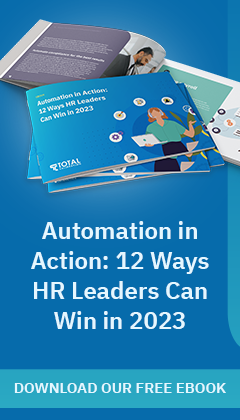We all know someone with a human resources (HR) horror story. Sadly, employees hate HR for a variety of reasons — some are logical reasons drawn from bad experiences, while others are from preconceived notions that HR staff is uncaring or only company-oriented. What most of us don’t know is that HR is constantly caught in a daily balancing act between accommodating employees and implementing company policies and culture.
Nowadays, to everyone’s benefit, many jobs and work processes are being replaced by machines and automated programs. Tasks like attendance-checking, annual leave approvals, payroll processing, and hiring can be done with the help of automation. With HR automation becoming a standard practice across industries, more companies are jumping in to survive the highly competitive disruptive age.
While some people might argue that automating HR processes reduces human interaction and engagement, automation actually has more pros than cons. Here are a couple of the positives:
Paperless workplace
Remember when you’d have to clock in by physically signing a timesheet or by feeding your punch card into the Bundy clock? Those days are gone. Today, your HR department can keep and maintain employees’ profiles, work schedules, attendance, and other kinds of records in digital platforms.
These platforms contain programs that automate menial tasks, let your company use less paper, and reduce stacking documents. Additionally, instead of sifting through massive piles of documents (that could also get lost and damaged), your HR staff can simply boot up your programs to gain access quickly.
Streamlined processes
By consolidating many HR functions under one platform, there will be less confusion among employees and HR staff alike. Your HR team can easily access employee and company needs through a dynamic, automated HR workflow that are in sync with other processes. This can also be done remotely as queries and concerns can be channeled immediately between requesting parties.
Improved productivity
With automation’s quick processing and data sharing capabilities, HR can get rid of repetitive administrative tasks such as looking through time logs, payroll calculations, and filings. This opens up time for other things with greater value, such as:
- Increased employee engagement – Automation grants the HR team more time to plan and implement new ways to get employees involved in the workplace. HR staff can create team-building activities or learning programs, design events like sports outings or outreach programs, and develop company perks like food allowances or employee referral programs. These HR-driven efforts can boost productivity and enhance work-life balance across the entire organisation.
- Reduced headcount – In the long run, there won’t be a need to run a big HR team as jobs like payroll accounting and management, daily reports, or employee attendance could be done by two to five people in the HR department.
- Improved candidate experience – Recruitment is a headache for many HR teams, but with applicant tracking software, your HR team could communicate clearly and consistently. If an applicant calls HR with questions, all relevant information can be found in one easily accessible database. In some cases, applicants can also track and check their own application status by logging in.
If done right, HR automation can help boost your bottom line. It can also help the role of HR professionals evolve as they work and focus on high-value activities such as career development or organisational design instead of spending time on routine tasks. Additionally, by bridging process gaps, the relationship between employees and HR could improve, making the workplace a more conducive environment for everyone.
Make your HR department more responsive, transparent, and measurable with Total Calibration. Many companies have chosen SharePoint-based solutions and portals like Lanteria HRIS to manage databases, store HR documents, automate onboarding, conduct performance evaluation, and monitor employee training. Call us now to learn more.


